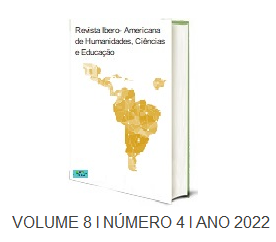ANALOGY OF THE EFFECTS OF PENICILLIN G BENZATINE AND CRYSTALLINE PENICILLIN IN THE TREATMENT OF CONGENITAL SYPHILIS: A SYNTHESIS OF EVIDENCE
DOI:
https://doi.org/10.51891/rease.v8i4.4856Keywords:
Syphilis. Congenital Syphilis. Benzathine penicillin. Crystalline penicillin.Abstract
Sexually transmitted infections (STIs) are considered a public health problem and are among the most common communicable pathologies, affecting the health and lives of people around the world. STIs have a direct impact on reproductive and child health, as they lead to infertility and complications in pregnancy and childbirth, in addition to causing fetal death and harm to the child's health. In this sense, we sought to report on syphilis, point out an analogy for the appropriate choice of antibiotics for the treatment of congenital syphilis and the action of the pharmacist that requires the development of their knowledge (of diseases, pharmacotherapy, the patient's pharmacotherapeutic profile, communication, patient monitoring, drug information and therapeutic planning) to develop pharmaceutical care and patient-focused practice in the pursuit of prevention. Main goal: To assess the efficacy and safety of antibiotic treatment for neonates with confirmed, highly probable, and possible congenital syphilis.To compare the use of the antibiotic penicillin G benzathine and that of crystalline penicillin in cases of congenital syphilis. Carry out interventions in order to solve and prevent pharmacotherapeutic problems.Methods: This is an exploratory study, based on the method of literature review with evidence synthesis, a systematic review was carried out using computational tools Scielo, Lilacs, Google Scholar, Publish or Perish, Cochrane Library in the month of February 2022, using the following descriptors combined with the Boolean operator AND: “Gestational syphilis AND congenital syphilis AND treatment”. The inclusion criteria were articles that showed some experiment in relation to the treatment of syphilis in pregnant women and congenital syphilis, in which the diagnosis and mechanism of antibiotics and the efficacy and safety of the treatment were addressed, selecting only that study with the highest proposal on the subject. The data obtained were analyzed for literature review. Results: The literary review was completed on February 12, 2022, in which a total of 20 articles were collected. After carefully reading the abstracts, only 07 were effectively reviewed. The excluded works did not adequately meet the theme proposed for the present work. Conclusions: It is hoped that this article will contribute to the continuous study of all and enable the discernment of the correct use for each case of syphilis.
Downloads
Downloads
Published
How to Cite
Issue
Section
Categories
License
Atribuição CC BY

